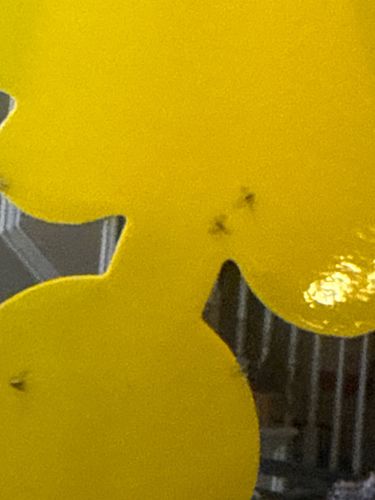Fungus Gnat
Scientific Name: Often species within the genera 'Bradysia' (Sciaridae) or 'Mycetophila' (Mycetophilidae). Due to the limited detail, a specific species cannot be determined.
Order & Family: Order: Diptera, Family: Sciaridae (dark-winged fungus gnats) or Mycetophilidae (true fungus gnats). Given the appearance and commonality in indoor settings, they are most likely Sciaridae.
Size: Adults are typically 1/8 to 1/4 inch (3-6 mm) long.

Natural Habitat
Commonly found indoors in homes and greenhouses, particularly around potted plants, terrariums, and other areas with moist soil. Outdoors, they can be found in damp, shady areas rich in organic matter.
Diet & Feeding
Adult fungus gnats typically do not feed or feed on liquids, while their larvae primarily feed on fungi, decaying organic matter, and plant roots, especially fine root hairs.
Behavior Patterns
Fungus gnats are attracted to moist environments, particularly around potted plants with consistently wet soil. Adults are weak fliers and tend to stay close to the soil surface. They are most active during dawn and dusk. Larvae feed on organic matter and fungi in the soil. The life cycle from egg to adult takes about 3-4 weeks depending on temperature and humidity, with multiple generations possible throughout the year.
Risks & Benefits
Potential Risks: Fungus gnat larvae can damage plant roots, especially seedlings and young plants, leading to wilting, stunted growth, and even plant death in severe infestations. Adults are primarily a nuisance, flying around and being a general annoyance. They don't bite humans. Potential Benefits: In natural ecosystems, fungus gnat larvae contribute to the decomposition of organic matter.
Identified on: 8/10/2025